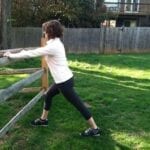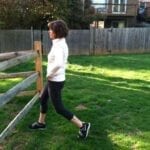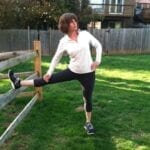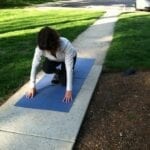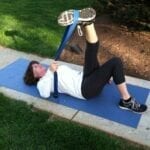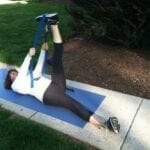Written by Jody Miller, M.A., RCEP
April 27, 2014
I believe in the 1/3-1/3-1/3 principle of fitness! Cardiovascular activities, muscular strengthening exercise and flexibility should each get one-third of your workout time. This rarely holds true, with the area of flexibility getting short-changed. For some, the rationale behind stretching isn’t strong enough to make it a priority. For others, exercise time is so limited that we tend to cut corners wherever we can, even when we know it’s important.
While evidence is slim that pre-workout stretching reduces the incidence of overall exercise-related injuries, there is some evidence that general stretching reduces musculotendinous injuries and is also effective for the treatment of a variety of orthopedic conditions including neck, shoulder, back and knee pain, and rounded shoulder syndrome. Additionally, joint range of motion impacts posture and balance. Tight muscles compromise joints potentially leading to greater risk of falls.
Formal stretching is no longer recommended to be included in a pre-workout warm up. Rather, the warm up segment should involve increasing blood flow and raising body temperature through large muscle “dynamic” movements (i.e. marching in place, no impact jumping jacks, or a slow paced walk or jog) for several minutes or until you feel ready to go. The warm up can then flow right into the cardio/aerobic segment or weight-training segments.
The most opportune time to stretch is after the cardio or weight sessions, while the body is warm and the muscles are receptive to increased tension. For greatest benefits, select stretches for the joints that were just used in your workout and perform either static or active forms of stretching:
- Static stretching –hold each position for 15-30 seconds repeating 2 – 4 times
- Active stretching — take the body part through a comfortable range of motion 5 – 10 times
If for no other reason, stretch because it feels good!
Here is a series of eight great stretches (shown below) for walkers, hikers and runners to follow after a workout:
- Standing Quad Stretch: Gently take hold of ankle or foot and draw heel towards buttocks. Lengthen the upper leg by directing the knee towards the floor.
- Wall-leaning One Leg Calf Stretch: Position front foot close to wall with bent knee. Straighten back leg stretching heel towards floor.
- Wall-leaning Hip Flexor Stretch: Position front foot close to wall with bent knee. Lengthen back leg staying on toes with heel lifted. Hold leg position while tilting hips forward.
- Standing Inner Thigh (Adductor) Stretch: Stand with body facing away from step or chair. Place one foot, toes upward, on step or chair. Gently lean towards foot until stretch is felt.
- Seated Pyriformis Stretch: Knees bent and feet flat on floor. Cross one ankle over opposite knee. Sit tall, pivoting from hips, lean forward. Keep straight back.
- Kneeling Achilles-Soleus Stretch: Kneeling on floor. Line up toes of one foot with opposite knee. Place hands in front on floor and lower upper body towards thigh.
- Supine Strap Iliotibial (IT Band) Stretch: Lying on back on floor, one knee bent foot on floor. Place strap around bottom of other foot. Straighten leg and gently draw it across midline slightly in front of bent knee.
- Supine Strap Hamstring Stretch: Lying on back on floor, one knee bent or straight on floor. Place strap around bottom of other foot and raise upward bringing it towards body. Very important to only lift to position where leg can remain straight (no bending of the knee).
http://www.ncbi.nlm.nih.gov/pmc/articles/PMC3273886/
For individual questions you may contact Jody Miller at [email protected], or (301) 299-6586.
Tags:


